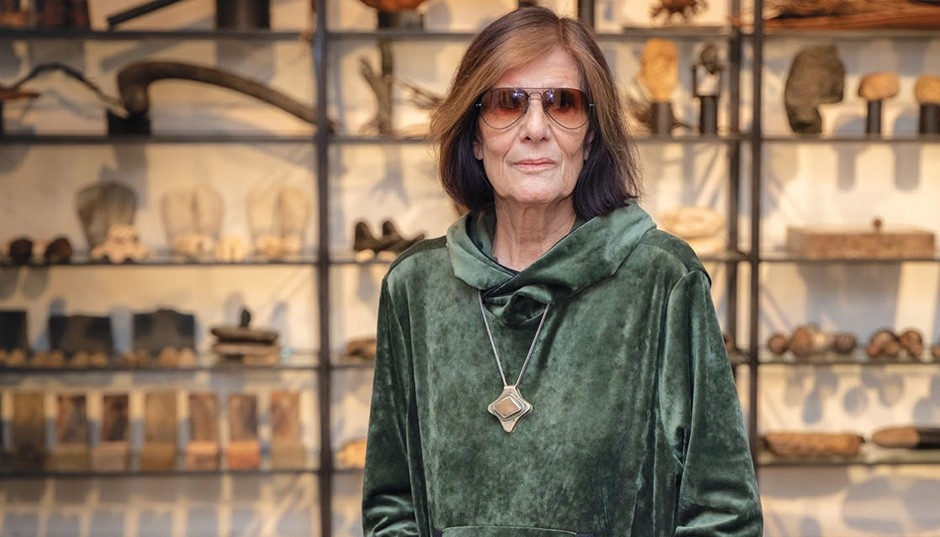Finding a voice in art and life
 Sylvia Safdie is a Montreal-based artist whose practice includes drawing, painting, sculpture, photography, installation and video. Her upcoming solo exhibition at the National Gallery of Canada opens on December 12, 2025.
Sylvia Safdie is a Montreal-based artist whose practice includes drawing, painting, sculpture, photography, installation and video. Her upcoming solo exhibition at the National Gallery of Canada opens on December 12, 2025.
Fifty years ago, I was part of Concordia’s first graduating class. Looking back on the extraordinary education and experiences I gained studying in the Faculty of Fine Arts, I am filled with gratitude.
In 1966, I had the privilege of accompanying my then-husband Morris Charney on a year-long trip to Europe for his research in urban design. It was an exhilarating, stimulating time, yet upon returning home, I realized I had to find my own voice.
Three years later, just after my son Dov was born, I enrolled in the evening fine-arts program at Sir George Williams University, one of Concordia’s founding institutions. Those years were transformative. A group of us would often stay late after class, critiquing each other’s works. Sometimes a teacher would drop in and we’d end up having long conversations.
I was petrified to attend my first studio class, convinced that my classmates were more experienced. The course was taught by Leah Sherman, BA 46, an extraordinary educator who, along with Alfred Pinsky, founded what would later become Concordia’s Faculty of Fine Arts.
Our first assignment was to “activate a surface.” Leah Sherman spread an array of art materials across a table and explained that the minute we made a mark on a page, we were activating and transforming it. I don’t know what motivated me, but I created marks by folding and creasing the paper. When Leah Sherman saw my work, her enthusiasm overwhelmed me. Her course became a critical foundation for me.
In Patrick Lansley’s drawing course, we primarily drew the model. One day, he took us to McGill University’s Redpath Museum to draw. The preserved organisms and bone structures fascinated me.
At that time, I had just given birth to my daughter Maya and would take her in her pram, spending hours drawing at the museum. It was an inspiring atmosphere, and it was exciting to work on something that I had chosen and that felt personal to me.
At the end of the term, after showing Patrick Lansley my coursework portfolio, I showed him my series of drawings from the Redpath Museum. He was then the curator of Concordia’s art gallery in the Hall Building. To my surprise, he invited me and another student to exhibit our work there.
He asked about my plans after graduation, and I told him I wanted to teach art. “Don’t ever teach,” he said. “It will burn you out. You are an artist — embrace it.” A couple of weeks later, when I was filling out forms to renew my passport, I wrote “artist” as my profession.
Alfred Pinsky, a walking encyclopedia of modern and contemporary art, opened my eyes to a whole new world. I respected him immensely. His course was based on Heinrich Wölfflin’s book Principles of Art History, in which the concept of “painterly” versus “linear” was developed. I can never hear those words without thinking of Alfred Pinsky. One day, I mustered the courage to ask for his feedback on my work. He studied it for what felt like an eternity, then finally said, “Continue working. It’s worth it.”
Another great influence was Stanley Horner, also a founding member of the Department of Fine Arts and head of the Department of Art Education. His passion for teaching was contagious.
In 1972, while still a night student, I was offered a job at Dawson College after a teacher left on short notice. I had no experience teaching and was terrified, but I accepted. Teaching during the day while studying at night was challenging, yet incredibly rewarding. The two experiences fed into each other, enriching my understanding of both art and education.
While I loved teaching and the dynamic interaction with the students, I eventually chose to focus entirely on my art practice.

